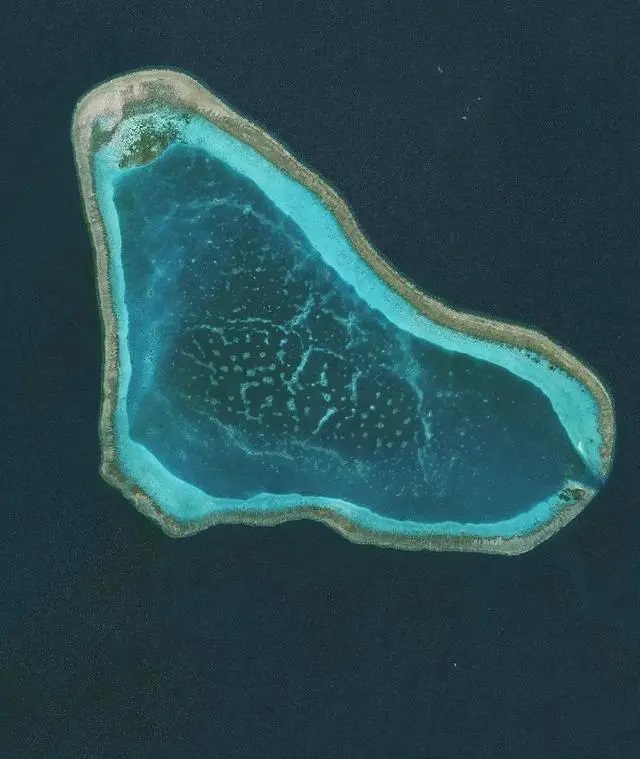
Huangyan Island. [Photo/Xinhua]
This is an editorial from China Daily.
Manila does have the "sovereign prerogative" to retain the Typhon mid-range missile launchers that the United States installed in the north of the Philippines in April. But the pretext it is employing to do so is overstretched, since it claims the move is for its "security" needs in the face of the "threat" posed by China; a threat that does not exist except as an excuse for the Philippines' own aggressive posturing.
The mid-range missile launch system, which is capable of firing both Tomahawk cruise missiles and the SM-6 surface-to-air and surface-to-surface missiles, is aggressive in intent as it puts not only southern Chinese military bases within range, but also the Taiwan Strait, and a large part of the South China Sea.
Reinforcing the antagonistic nature of its insistence on its "sovereign prerogative", Manila is reportedly also mulling the deployment of other advanced weapons systems from the US in its northernmost bases, which will overlap the field-of-fire of the Typhon system, turning the Philippines into a well-equipped military bridgehead for the US.
Although the Taiwan question and the South China Sea maritime disputes between Beijing and Manila are different in nature, with the former being strictly China's internal affair, Washington makes no bones about its intention of weaving the two together under the military dimension of its "Indo-Pacific" strategy.
As part of this, it is getting its allies in Asia to deploy mid-range missile launch systems. The Republic of Korea deployed the US' Terminal High Altitude Area Defense system in 2016 and Japan has agreed to the US deploying the High Mobility Artillery Rocket System in temporary bases along the Ryukyu Islands starting from September, citing "threats" from regional countries.
Manila's longing to retain the weapons as its permanent "toys" is hard to understand for any peace-loving mind. Many European countries tried their best to shun the hot potatoes at the height of Cold War as they would have invariably become prime targets in a conflict.
Since mid-range missiles are extremely aggressive strategic weapons that can easily provoke geopolitical confrontation and an arms race, after the end of World War II, major countries have been extremely prudent about deploying them, with the US and Soviet Union's mid-range missile treaty being a testament to this.
The ease with which the US can install a mid-range missile system in the Philippines, taking advantage of what the two sides called a routine drill in April and have Manila retain the system on Philippine soil exposes the collusion between Washington and Manila.
Manila's seeming ignorance on the potential dangers of its "toys" indicates what an ideal choice the US has made in making it its marionette in the region.
The move is provocative and dangerous for not only the Philippines but also the whole of the Asia-Pacific. In putting at risk regional peace and stability so it can be a key player in Washington's geopolitical game, Manila is being extremely irresponsible.
The restraint the Chinese side has been exercising in the face of the Philippines' continuous provocations regarding Chinese islands, reefs and surrounding waters in the South China Sea — with the latest ones being staged around China's Houteng Reef and Huangyan Island earlier this week — should drive home the message that China has not thought of settling the disputes by force, but only by political means.
Although it appears that some in Washington and Manila are eager to see a conflict break out between China and the Philippines, the two neighbors have had some past success in trying to resolve their disputes through negotiations and dialogue, which are the only meaningful ways to settle their maritime disputes, and the only way to maintain peace and stability in the South China Sea, and the Asia-Pacific region beyond.

 中文
中文



